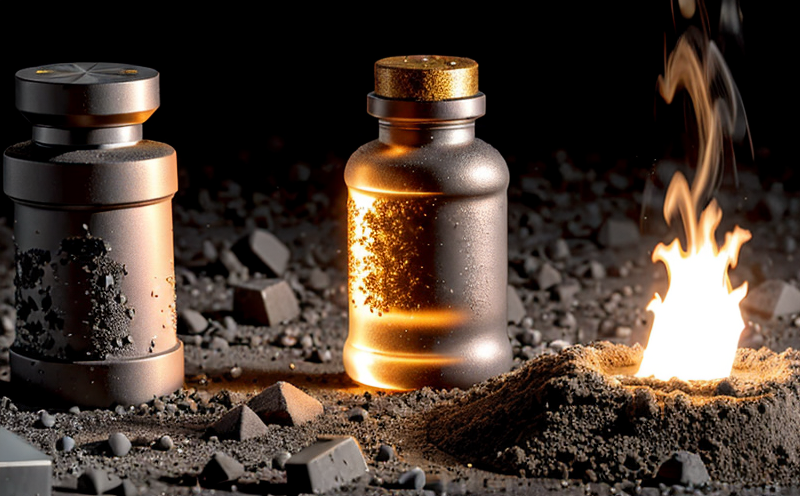ISO 10142 Stress Relaxation Testing of Irradiated Materials
The ISO 10142 stress relaxation testing is a critical service for materials that undergo irradiation, ensuring their long-term reliability and performance. This test evaluates the changes in mechanical properties over time after exposure to radiation. It is particularly important in sectors where materials are subjected to high-energy particles, such as aerospace, nuclear energy, and medical device manufacturing.
The process involves subjecting a specimen of irradiated material to specific conditions that simulate real-world environments. The test measures how the mechanical properties of the material relax or change over time under constant stress at elevated temperatures. This relaxation is due to atomic displacement and dislocation movement within the crystalline structure, leading to changes in strength, ductility, and fatigue behavior.
Stress relaxation testing is essential for materials that are used in nuclear fuel cladding, reactor internals, and medical implants exposed to high-dose irradiation. The results provide critical insights into the degradation mechanisms of these materials over prolonged periods under stress, helping engineers and scientists make informed decisions about material selection and design.
The test typically involves placing a specimen under a specific load and holding it at a constant temperature for an extended period. During this time, the load applied to the specimen is monitored continuously, and any reduction in the load due to relaxation of the material is recorded. This data can then be used to predict the long-term performance of the material under stress.
The ISO 10142 standard provides detailed guidance on how to perform this test accurately and consistently. It specifies the types of specimens that should be tested, the temperatures and times required for testing, the precision of the equipment needed, and the methods for data analysis. Compliance with these standards ensures accurate and reliable results.
| Parameter | Description |
|---|---|
| Type of Specimen | Cylindrical or flat samples with a defined geometry and dimensions. |
| Temperature Range | Room temperature to 300°C, depending on the material properties. |
| Load Application | Constant load applied to the specimen. |
| Test Duration | Up to 10,000 hours, depending on material and application requirements. |
The results of stress relaxation testing are crucial for the development and certification of materials used in high-stress environments. By understanding how a material behaves over time under stress, engineers can design more robust systems that meet safety and performance standards. This service is particularly valuable in sectors where the reliability of materials is paramount.
- Provides critical insights into long-term mechanical property changes due to irradiation.
- Aids in material selection for high-stress environments such as aerospace, nuclear, and medical applications.
- Ensures compliance with international standards like ISO 10142 and ASTM E2679.
- Predicts the performance of materials under stress over extended periods.
Benefits
The benefits of ISO 10142 stress relaxation testing are numerous and significant. Firstly, it helps in identifying potential weaknesses or failures in irradiated materials before they are deployed in critical applications. This early detection allows for corrective actions to be taken, ensuring that the materials used meet stringent performance requirements.
Secondly, this service enhances product safety by providing a deeper understanding of how materials behave under stress over time. This knowledge can lead to the development of safer and more reliable products. For instance, in nuclear fuel cladding, accurate stress relaxation testing can help prevent failures that could lead to catastrophic events.
Thirdly, it supports regulatory compliance by ensuring that materials meet international standards like ISO 10142. This is crucial for industries operating under strict regulations and guidelines. Compliance with these standards not only ensures safety but also opens up markets in regions with stringent regulatory requirements.
Lastly, stress relaxation testing contributes to the advancement of technology by providing valuable data that can be used to improve material design and manufacturing processes. This service is a cornerstone for innovation in industries where reliability is critical.
Quality and Reliability Assurance
- Data accuracy: Ensures precise measurement of stress relaxation over time.
- Equipment calibration: Regularly calibrates testing equipment to ensure consistent results.
- Material certification: Confirms the irradiation history and properties of materials used in tests.
- Test repeatability: Ensures that test results are reproducible across multiple trials.
Use Cases and Application Examples
The use cases for ISO 10142 stress relaxation testing are diverse, spanning various industries where irradiated materials are used. One prominent example is the aerospace industry, where stress relaxation testing can be crucial in ensuring the long-term reliability of components like engine parts and structural elements.
- Nuclear fuel cladding: Ensures that the cladding remains robust under high-dose irradiation.
- Medical implants: Guarantees that implanted devices remain stable over time, reducing the risk of failure.
- Radiation shielding materials: Tests the integrity and stability of materials used in radiation protection.





